The art of apple orchard management has seen a significant transformation over the years. Understanding tree density, the number of trees planted per acre, plays a pivotal role in maximizing yield, ensuring healthy growth, and optimizing space. This knowledge is not just about planting trees; it’s about cultivating success.
The number of apple trees one can plant per acre varies based on tree size and desired spacing. Standard-sized trees typically allow for 36 trees per acre. Semi-dwarf varieties can accommodate around 170 trees per acre, while dwarf apple trees can go up to 400 trees per acre. However, with very high-density planting, this number can reach up to 1,500 trees per acre, optimizing yield and orchard management.
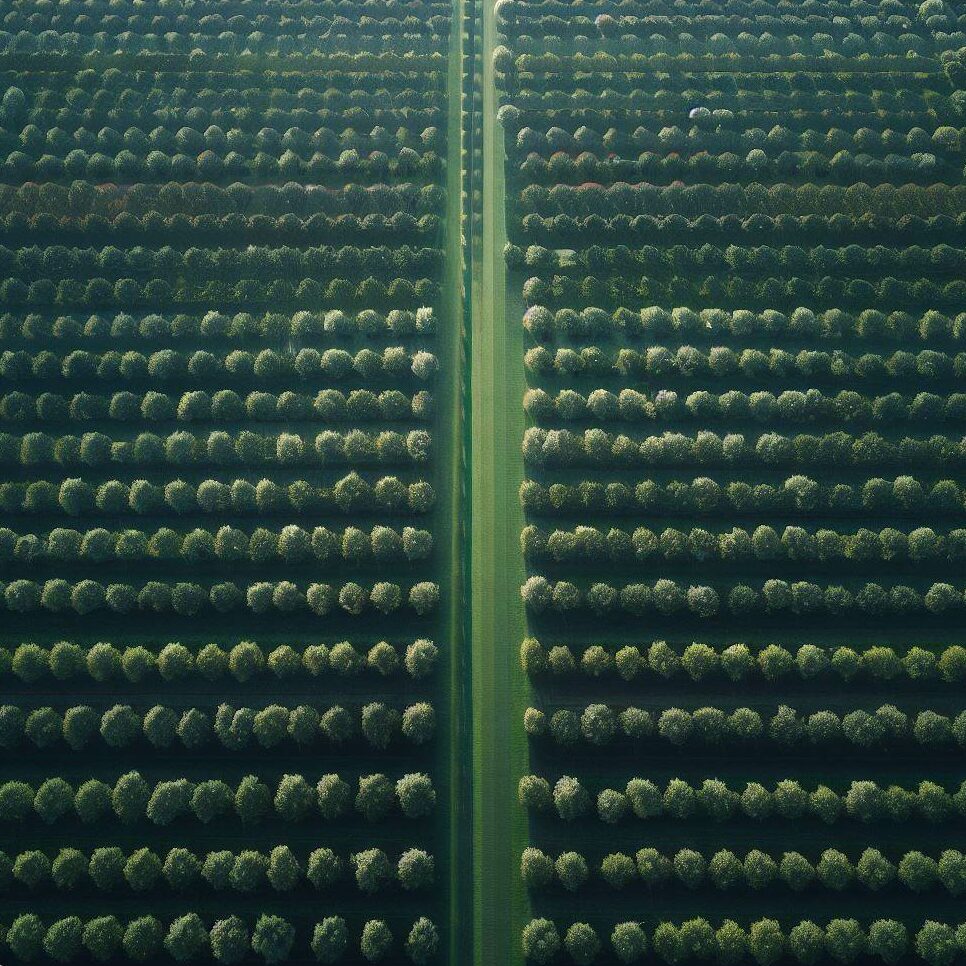
The Importance of Tree Density
Tree density in apple orchards is akin to laying the foundation of a building. Get it right, and you have a robust structure that stands the test of time. The density determines:
- How efficiently sunlight is utilized by the trees.
- The ease of orchard operations like pruning, spraying, and harvesting.
- The overall health and productivity of the orchard.
Evolution of Apple Orchards
Historically, apple orchards predominantly featured standard-sized trees, spaced generously apart, often with as few as 20-40 trees per acre. These sprawling trees painted a picturesque landscape but weren’t the most efficient in terms of yield per acre.
🍏 Apple Advice: When planning an orchard, consider both the immediate space and future growth of the trees. A little foresight can lead to bountiful harvests! 🍏
With advancements in agricultural practices and the introduction of dwarfing rootstocks, the apple farming community witnessed a paradigm shift towards high-density orchards. These modern orchards, boasting 500 to 1,500 trees per acre, not only optimize space but also promise quicker returns on investment.
🍎 Apple Advice: High-density doesn’t mean overcrowding. It’s about optimizing space while ensuring each tree gets its share of nutrients, water, and sunlight. 🍎
As we delve deeper into the core principles of planting apples, we’ll explore the nuances of tree density, its impact on yield, and the art of modern orchard management. So, let’s embark on this fruitful journey together!

Historical Perspective: Traditional Spacing
Journeying back in time, apple orchards painted a vastly different picture than the high-density landscapes we’re accustomed to today. The historical context of apple tree planting was rooted in tradition, space, and the sheer grandeur of sprawling apple trees.
The Grandeur of Yesteryears
In the past, apple orchards were characterized by majestic, standard-sized trees that stood tall, reaching up to 30 feet (approximately 9 meters) in height. These trees, with their expansive canopies, were not just symbols of nature’s bounty but also a testament to the orchardist’s patience and dedication.
🍎 Apple Advice: While modern practices favor efficiency, understanding traditional methods offers valuable insights into the evolution of apple farming.
Spacing and Density: A Bygone Era
Traditional orchards prioritized space, often at the expense of maximizing yield. The typical density of these standard-sized trees was:
- 20-40 trees per acre.
- Spaced at about 40 feet x 40 feet (approximately 12 meters x 12 meters).
This generous spacing was not just a farming choice but also influenced by the available tools and machinery of the era. The wide gaps between trees facilitated easier movement of horse-drawn equipment and manual labor.
🍏 Apple Advice: Traditional spacing was as much about practicality as it was about aesthetics. The vast spaces between trees allowed for picnics, gatherings, and even dances under the apple blossoms! 🍏
While the charm of traditional orchards is undeniable, the evolution towards high-density planting was inevitable. As we progress, we’ll uncover the reasons behind this shift and the benefits it brought to apple farming. But for now, let’s cherish the memories of those grand old trees and the tales they’ve witnessed.
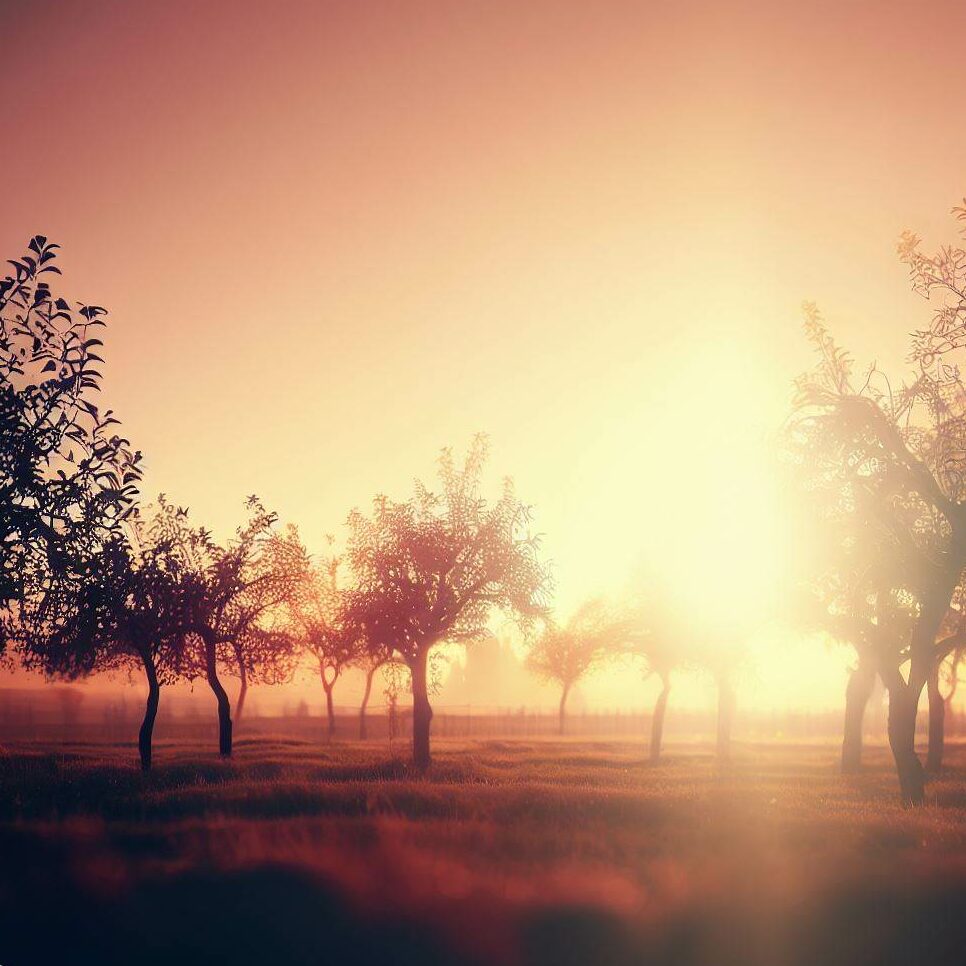
Modern High-Density Orchards
As the world of apple farming evolved, so did the techniques and technologies that shaped it. The introduction of dwarfing rootstocks marked a significant turning point, revolutionizing the very fabric of apple orchards. Let’s delve into this transformation and understand the shift from the sprawling landscapes of yesteryears to the compact, efficient orchards of today.
The Rise of Dwarfing Rootstocks
Dwarfing rootstocks, as the name suggests, are special root systems that limit the growth of apple trees. These rootstocks have brought about:
- Reduced tree height, often to just 8-10 feet (approximately 2.4-3 meters).
- Earlier fruit-bearing age, sometimes as early as 2-3 years post-planting.
- Enhanced yield per acre due to increased tree density.
🍎 Apple Advice: Dwarfing rootstocks not only maximize yield but also simplify orchard management tasks like pruning, spraying, and harvesting. 🍎
From Traditional to High-Density: The Paradigm Shift
The adoption of dwarfing rootstocks catalyzed a significant shift in orchard management:
- Modern orchards can house 500 to 1,500 trees per acre
- Efficient use of land, leading to higher profitability.
- Optimized irrigation, pruning, and pest control practices.
This transition wasn’t just about maximizing yield. It was a holistic approach, considering the environmental footprint, sustainability, and the ever-growing global demand for apples.
🍏 Apple Advice: While high-density orchards require a higher initial investment, the returns in terms of yield and ease of management make it a worthy endeavor for modern apple growers. 🍏
In essence, the world of apple farming has come a long way, adapting and evolving with the times. From the grandeur of traditional orchards to the efficiency of modern high-density ones, the journey has been remarkable, reflecting humanity’s innate ability to innovate and adapt.
Factors Influencing Tree Density
The dance of apple trees in an orchard, swaying to nature’s rhythm, isn’t just a sight to behold but a science in itself. Several factors come into play when determining the density of apple trees in an orchard. Let’s embark on a journey to understand these intricacies.
1. The Role of Rootstock
Rootstock is the foundation of an apple tree. It determines not just the tree’s size but also its vigor and lifespan:
- Dwarfing Rootstocks: Lead to smaller trees, allowing for closer spacing. For instance, trees might be spaced just 6 feet (approximately 1.8 meters) apart.
- Standard Rootstocks: Result in larger trees, requiring wider spacing, sometimes up to 40 feet (approximately 12.2 meters).
🍎 Apple Advice: Choosing the right rootstock is crucial. It influences not just tree density but also the tree’s resistance to pests and diseases. 🍎
2. Apple Variety and Vigor
Not all apples are created equal. Different varieties have varying levels of vigor:
- High Vigor Varieties: Require more space to grow and spread.
- Low Vigor Varieties: Can be planted closer together.
It’s essential to understand the specific variety’s needs to ensure optimal spacing and tree health.
3. Training Systems and High-Density Planting
The training system, or the way trees are pruned and shaped, plays a pivotal role in high-density orchards:
- Vertical Axis: A popular system that allows for closer spacing.
- Tall Spindle: Another system favoring high-density planting.
🍏 Apple Advice: The right training system can significantly increase yield per acre while ensuring easier management. 🍏
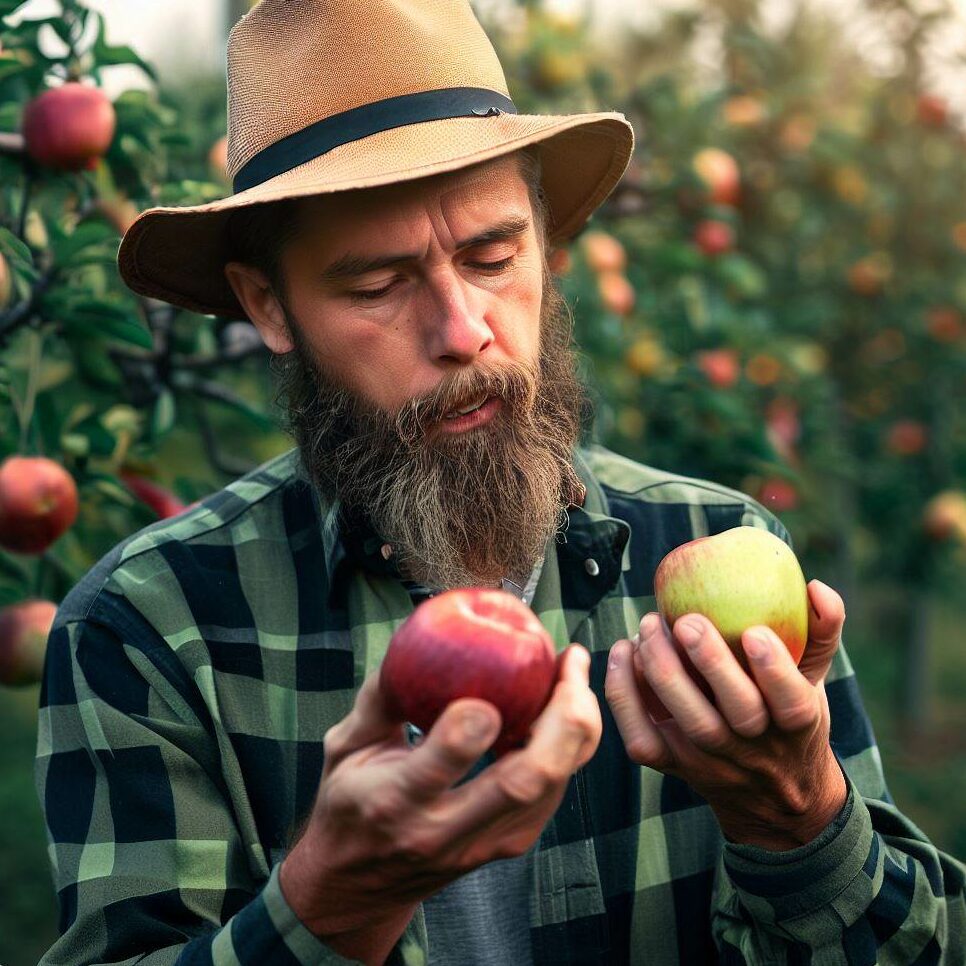
4. The Art and Science of Orchard Management
High-density orchards, while promising higher yields, demand meticulous management:
- Pruning: Regular and precise pruning ensures healthy growth and better fruit quality.
- Pest Control: Closer spacing can sometimes lead to increased pest activity, necessitating vigilant pest control.
- Nutrient Management: Ensuring each tree gets the nutrients it needs is paramount, especially in high-density settings.
In essence, while high-density orchards promise bountiful yields, they also demand a keen understanding of various influencing factors. With the right knowledge and practices, the orchard can truly flourish, bearing fruits that are a testament to the grower’s dedication and expertise.
Benefits of High-Density Planting
In the ever-evolving world of apple orchards, high-density planting has emerged as a game-changer. But what makes it so special? Let’s dive into the myriad benefits of this modern approach.
1. Earlier Production
One of the most enticing advantages of high-density orchards is the promise of earlier fruit-bearing. While traditional orchards might keep you waiting for years, high-density counterparts can start producing apples in as little as 2-3 years. That’s a quicker return on investment!
2. Bountiful Yields
More trees per acre translates to more apples. Simple math, right? High-density orchards can yield up to three times more fruit than their traditional counterparts. That’s a lot of apple pies!
3. Easier Management
Dwarf and semi-dwarf trees, common in high-density orchards, are easier to manage. Their shorter stature means:
- Less ladder work during pruning and harvesting.
- More efficient pest and disease control.
- Uniform fruit quality due to better sunlight distribution.
4. Economic Benefits
Let’s talk numbers. With higher yields and earlier production, the apple orchard profit per acre can be significantly higher in high-density settings. It’s not just about more apples; it’s about maximizing profit in the same land space.
🍎 Apple Advice: While the initial investment for high-density orchards might be higher, the potential returns in terms of yield and profit can make it a worthy venture. 🍎
In conclusion, high-density planting is like the modern alchemy of apple orcharding. With the right practices, it promises golden returns, both in terms of fruit and profit.
Considerations and Challenges
While the allure of high-density orchards is undeniable, it’s essential to approach this modern method with both eyes open. Like all ventures, it comes with its own set of challenges and considerations. Let’s delve into the nitty-gritty of what potential orchardists should be aware of.
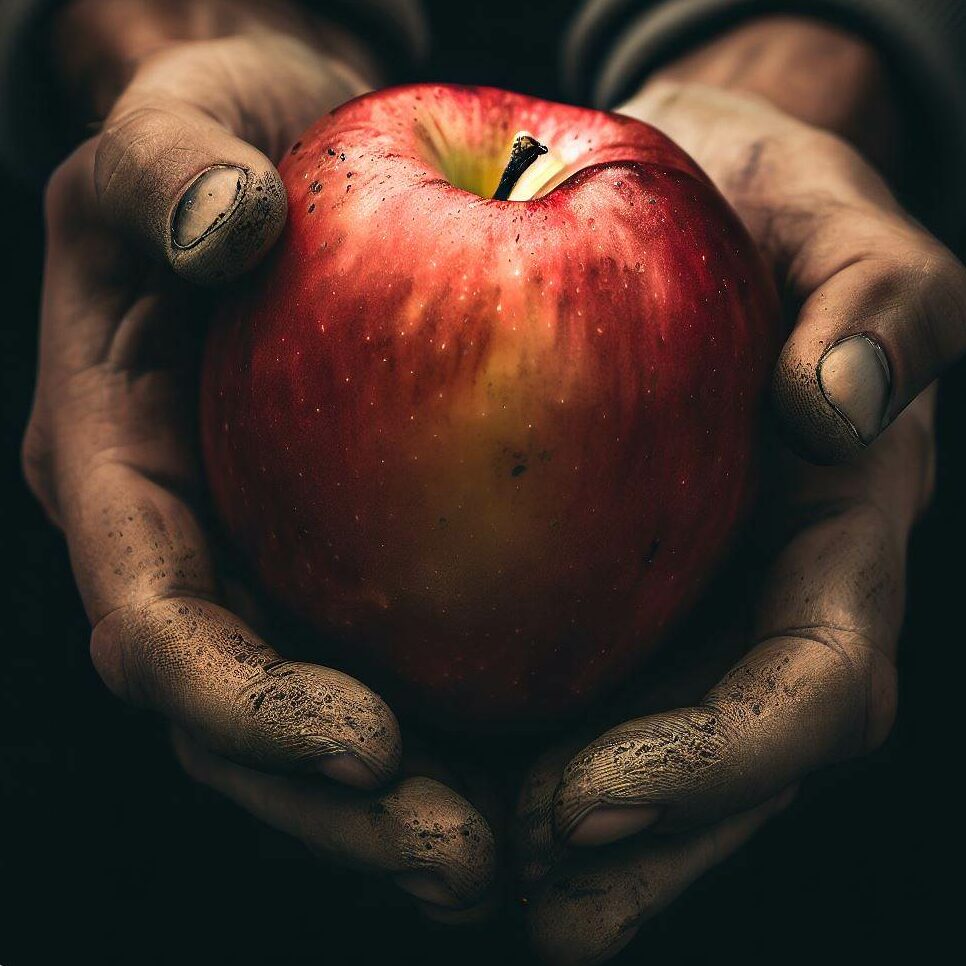
1. Initial Investment
Embarking on the high-density journey requires a more substantial initial investment compared to traditional orchards. This includes:
- Cost of dwarfing rootstocks, which can be pricier.
- Infrastructure like trellises or support systems.
- More trees per acre, increasing planting costs.
2. Intensive Management
High-density orchards demand more hands-on attention, especially in the early years. This means:
- Frequent pruning to shape young trees. Thinning apple clusters to increase size.
- Regular monitoring for pests and diseases due to closer plantings.
- Ensuring optimal irrigation and nutrient management for densely packed trees.
3. Disadvantages of Owning an Apple Orchard
While the idea of owning an apple orchard sounds dreamy, it’s not without its challenges:
- Weather Dependency: Apple trees are at the mercy of Mother Nature. Unpredictable weather events can impact yield.
- Labor Intensity: Especially during harvest season, orchards require a lot of hands on deck.
- Market Fluctuations: The price of apples can vary, affecting profit margins.
- Disease and Pests: Orchards can be susceptible to various diseases and pests, requiring vigilant monitoring and management.
🍏 Apple Advice: Before diving into the world of apple orcharding, it’s wise to do thorough research and perhaps even seek mentorship from experienced orchardists. 🍏
In essence, while high-density apple orchards promise bountiful rewards, they also come with their own set of challenges. Being prepared and informed can make the journey smoother and more fruitful.
Personal Touch: Anecdotes and Experiences
There’s an old saying in the apple farming community: “The best time to plant an apple tree was 20 years ago. The second best time is now.” Throughout my journey with apple orchards, I’ve collected a basketful of memories and stories that have shaped my understanding of this beautiful craft.
1. The First Apple
I still remember the joy of plucking my first apple. It wasn’t the biggest or the juiciest, but it was mine. The culmination of months of care, patience, and learning. Holding it in my hand, I felt a connection to the land and the cycles of nature.
2. Spacing Woes
In my early days, I experimented with tree spacing, sometimes with comical results. Once, I planted them so close that I joked I’d created an apple hedge rather than an orchard! It was a lesson in the importance of giving each tree its space to thrive.
🍎 Apple Advice: Trees, like people, need their space to grow and flourish. Ensure you’re giving them the room they need! 🍎
3. The Orchard Dance
Every harvest season, after the last apple is picked, I have a little tradition. I dance through the orchard, letting the leaves rustle around me, celebrating another season of growth and bounty. It’s a moment of pure, unbridled joy, a dance of gratitude to Mother Nature.
Apple farming isn’t just about the numbers and techniques; it’s about the stories, the experiences, and the connection to the land. Each tree, each apple, has a story to tell, and I’m here to listen.
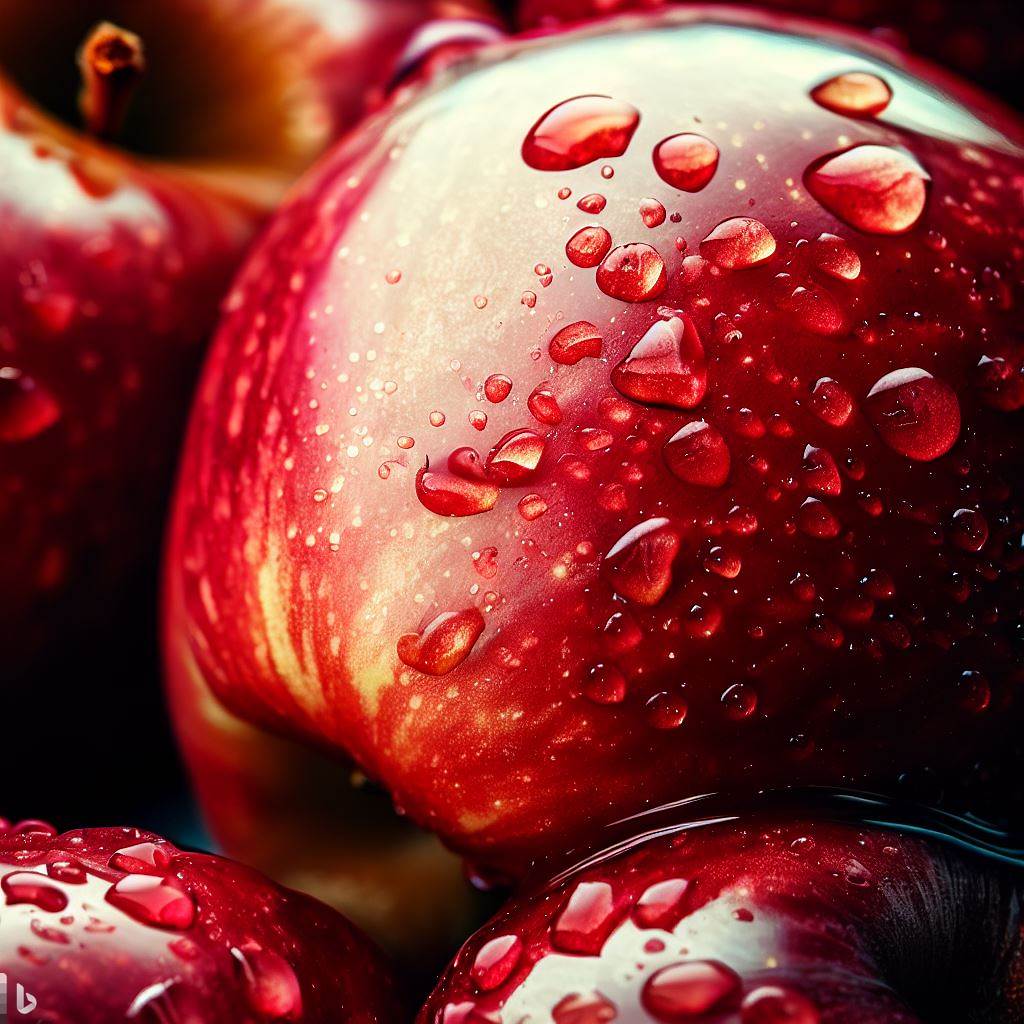
Addressing Key Questions
Navigating the world of apple orchards can be a maze of questions. Let’s dive deep into some of the most commonly asked queries and shed light on the intricacies of apple farming.
1. How much money does 1 acre of apples make?
The profitability of an apple orchard varies based on factors like tree density, apple variety, and market demand. On average, a high-density orchard can yield between $15,000 to $20,000 per acre annually. However, this figure can fluctuate based on factors like weather conditions, pest management, and market prices.
2. How many apple trees make a profit?
Profitability isn’t solely about the number of trees but the quality of apples produced and the efficiency of orchard management. A well-maintained orchard with 500 high-density dwarf apple trees can start turning a profit in its third or fourth year, given the earlier fruit-bearing nature of these trees.
3. Is growing apple trees profitable?
Absolutely! With the right practices, apple farming can be a lucrative venture. Factors like choosing the right apple variety, efficient pest control, and effective marketing strategies play a crucial role in determining profitability. However, it’s essential to remember that the initial investment can be high, especially for high-density orchards.
🍏 Apple Advice: Diversifying apple varieties and incorporating agrotourism can boost orchard profitability! 🍏
4. What is the best spacing for apple trees?
The ideal spacing depends on the tree’s size. Standard apple trees require about 26 feet x 20 feet (8m x 6m) spacing, semi-dwarf trees thrive at 16 feet x 22 feet (5m x 7m) to 10 feet x 14 feet (3m x 4.5m), and dwarf apple trees can be planted as close as 6 feet x 6 feet (1.8m x 1.8m).
5. What is the most profitable apple?
While the answer can vary based on regional preferences, Honeycrisp apples have gained immense popularity in recent years due to their crisp texture and sweet-tart flavor, often fetching higher market prices. However, local heirloom varieties can also be profitable, especially in niche markets or farm-to-table ventures.
6. How many semi-dwarf apple trees per acre?
On average, you can fit around 170 semi-dwarf apple trees per acre, but this can range from 123 to 311 trees based on specific spacing practices.
7. How many dwarf apple trees per acre?
Dwarf apple orchards can accommodate up to 1,210 trees per acre with tight spacing. However, on average, about 400 dwarf apple trees fit comfortably in an acre.
8. How many apple trees per person?
This whimsical question doesn’t have a one-size-fits-all answer. For personal consumption, 2-3 apple trees can provide ample apples for a family of four. However, for commercial purposes, the number would be determined by the intended market size and demand.
Apple farming, like any venture, comes with its set of challenges and rewards. By seeking answers and continuously learning, one can reap the sweet fruits of labor and knowledge.
Conclusion
As we meander through the orchards of knowledge, it’s evident that the world of apple farming is as vast as it is intricate. From the historical roots of traditional tree spacing to the innovative branches of modern high-density orchards, understanding the nuances of tree density is akin to unlocking the secret to nature’s bounty.
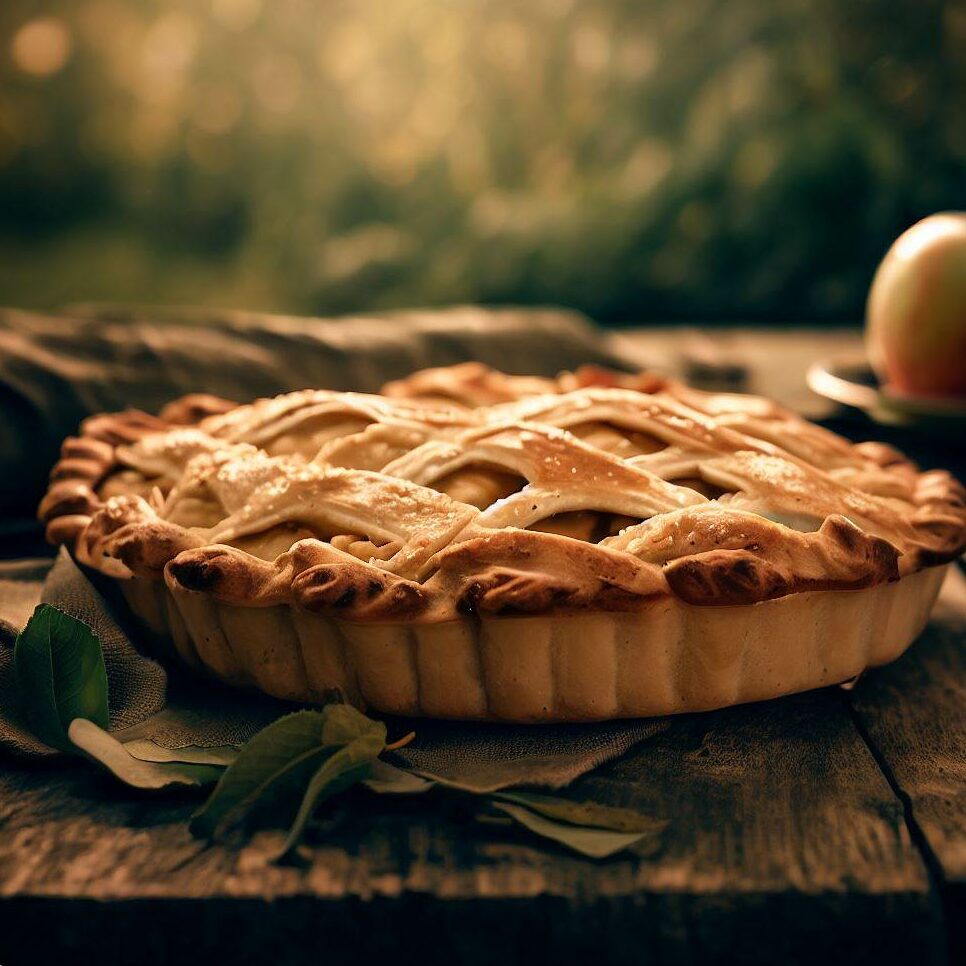
Key Takeaways:
- Tree density plays a pivotal role in determining the yield and profitability of an apple orchard.
- The evolution from standard-sized trees to dwarf and semi-dwarf varieties has revolutionized apple farming, allowing for increased production in smaller spaces.
- Factors like rootstock, apple variety, and orchard management intricacies weave the tapestry of successful apple cultivation.
- While high-density planting offers myriad benefits, it’s essential to weigh the initial investments and challenges.
In the grand orchard of life, understanding the delicate balance between tree density, variety, and care can lead to a harvest that’s not just fruitful but also profitable. As we stand amidst the apple trees, let’s cherish the wisdom they offer and the promise of a bountiful future.
🍏 Apple Advice: Just as every apple has its unique flavor, every orchard has its story. Embrace the journey, and the fruits of labor will surely follow. 🍏
